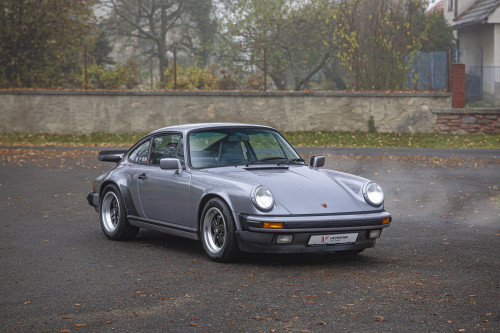Post-War, Alfa Romeo concentrated on becoming a volume producer, yet it wheeled out its 1938/39 Tipo 158 single seaters and, after a hiccough on their first outing in 1946, they won every Grand Prix they entered until mid-1951, a period of domination without parallel in the history of the sport.
It was typical of the spirit of Alfa Romeo that it should return to Grand Prix racing while still repairing a factory which had been heavily bombed and while developing an entirely new design, the 1900, which would begin the process of making Alfa Romeo into a mass producer.
Released in 1950 the 1900 was the first all new car after the war to be designed by Alfa Romeo. The 1900's went through a series of changes and modifications. The first cars were powered by a 1884cc twin cam engine with a cast iron block and an alloy cylinder head producing 80hp. It was the first Alfa Romeo to be produced using monocoque construction with no separate chassis. The front suspension used double wishbones, coil springs and hydraulic telescopic dampers, whilst at the rear a solid axle was located by two arms meeting above the differential together with coil springs and telescopic dampers. However in 1953 the 1900 Super, TI Super and Super Sprint known as the SS were released. These featured numerous modifications including various detail improvements most importantly an engine with a larger capacity of 1975 ccm, two double choke carburettors, increased compression ratio, revised exhaust maifold and 115 bhp.
This most attractive 1950's sports racer features the immensely popular and reliable 1900 ccm four cylinder engine fitted with twin Weber 40 DCOE 81 carbs endowing it with impressive performance. The FIA and HTP papers which accompany the car reveal that this delightful car had just one owner from 1954 to 1978 and it is believed that it was in period rebodied with its current coachwork.
This interesting car would look the part and not be disgraced amongst any of the more exclusive historic events which are currently all the rage.
The car is a special made, the engine is a 2 twin plugs, 2 twin Weber carburettors. Frederico Formenti was probably behind the build of this aluminium body. As he came in 1940 to Carrozzeria Touring, his inspiration for the body was obviously by the Disco Volante built by Touring.
The Alfa Romeo 1900 "Disco Volante" (Italian for "Flying Saucer"), is a series of experimental sports racing cars produced between 1952 and 1953 by Italian car manufacturer Alfa Romeo in collaboration with Milanese coachbuilder Carrozzeria Touring. The car was distinguished by streamlined, wind tunnel tested bodywork.
Three spiders were made with a 2-litre all-alloy four-cylinder engine. Alfa Romeo prepared 3 Disco Volante cars with 3,6-liter six-cylinder engines and 5-speed gearboxes for the Mille Miglia 1953, driven by Fangio, Sanesi and Kling. Sanesi was leading the race in Verona, Kling in Rome and Fangio in Florence, who finally took 2nd place overall. Alfa Romeo didn't race with factory cars in 1954 because of the firm's change of policy. But Consalvo Sanesi, a long-time Alfa Romeo driver who won already two podium places (2nd and 3rd) in class at Mille Miglia, won his class with Alfa Romeo at Carrera Panamericana and was also a F1 driver for Alfa Romeo, raced again a Disco Volante inspired race car, this time with a spyder body and with a 2-liter 4-cylinder engine from 1900 Super, this exact car!
The most interesting point in the history file is that the car is reputed to have been entered in the 1954 Mille Miglia, driven with the starting number 457 by Consalvo Sanesi (I) and Giuseppe Cagna (I) to 9th place in the 2-liter sports class, 52nd overall! From 1954 the car has been by its Italian owner Bruno Tanzi of Modena and also by the Belgium owner in many events.
After entering Goodwood Revival in 2009, the car came to a tragical ending in 2012.
Professor Merrick Taylor OBE, was behind the wheel of the Alfa Romeo Barchetta – one of his favourite cars – when he was involved in a collision on 14th of February 2012. His car collided with a blue Peugeot 406, he was declared dead at the scene.
Under his leadership Motor Panels Ltd went on to become the largest independent cab designers and manufacturers in Europe, increasing sales ten-fold. The company was also named as one of the top 100 companies to work for in the UK.
Famous motor racing stars like Sir Stirling Moss at the wheel of his Jaguar C-Type came to his memorial run.
Prof. Taylor entered the Retro “Mille Miglia” around Italy in his favoured Jaguar C-Type and participated with this Alfa Romeo SS Spyder at Goodwood Revival in 2009.
A sculpture of a car with an incredible history. It could be a challenging project to bring the car back to life or to preserve it in its current form as a testament to motoring history.
| Production date | 1954 |
|---|---|
| Body Type | Roadster |
| Engine | 1.975 ccm, ca. 140 PS, I4 |
| transmission | Manual |
| Steering | Left Hand Drive |
|---|---|
| Layout | Rear Wheel Drive |
| Color - exterior | Alfa Rosso |
| Color - interior | Black |
| Miles/Kilometers shown | 4.347 kms |
|---|---|
| Chassis / VIN | N/A |
| Location - Country | Czechia |
| Location - City | Pisek |
2-door roadster body type; RWD (rear-wheel drive), manual 5-speed gearbox; gasoline (petrol) engine with displacement: 1975 cm3, advertised power: 103 kW / 138 hp / 140 PS, torque: 165 Nm; characteristic dimensions: outside length: 3920 mm, width: 1540 mm, wheelbase: 2630 mm; reference weights: base curb weight: 910 kg; top speed: 220 km/h (137 mph); accelerations: 0-60 mph 8 s; 0-100 km/h 8.4 s

Písek, CZ

Písek, CZ

Písek, CZ

Písek, CZ

Písek, CZ

Písek, CZ